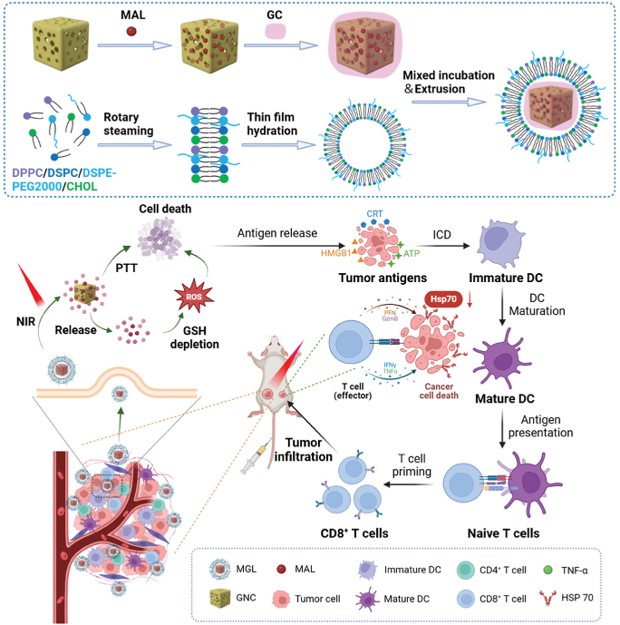Abstract
Cancer immunotherapy offers significant clinical benefits for patients with advanced or metastatic tumors. However, immunotherapeutic efficacy is often hindered by the tumor microenvironment's high redox levels, leading to variable patient outcomes. Herein, a therapeutic liposomal gold nanocage (MGL) is innovatively developed based on photo-triggered hyperthermia and a releasable strategy by combining a glutathione (GSH) depletion to remodel the tumor immune microenvironment, fostering a more robust anti-tumor immune response. MGL comprises a thermosensitive liposome shell and a gold nanocage core loaded with maleimide. The flexible shell promotes efficient uptake by cancer cells, enabling targeted destruction through photothermal therapy while triggering immunogenic cell death and the maturation of antigen-presenting cells. The photoactivated release of maleimide depletes intracellular GSH, increasing tumor cell sensitivity to oxidative stress and thermal damage. Conversely, GSH reduction also diminishes immunosuppressive cell activity, enhances antigen presentation, and activates T cells. Moreover, photothermal immunotherapy decreases elevated levels of heat shock proteins in tumor cells, further increasing their sensitivity to hyperthermia. In summary, MGL elicited a robust systemic antitumor immune response through GSH depletion, facilitating an effective photothermal immunotherapeutic strategy that reprograms the tumor microenvironment and significantly inhibits primary and metastatic tumors. This approach demonstrates considerable translational potential and clinical applicability.

文章链接:https://onlinelibrary.wiley.com/doi/10.1002/smll.202407388